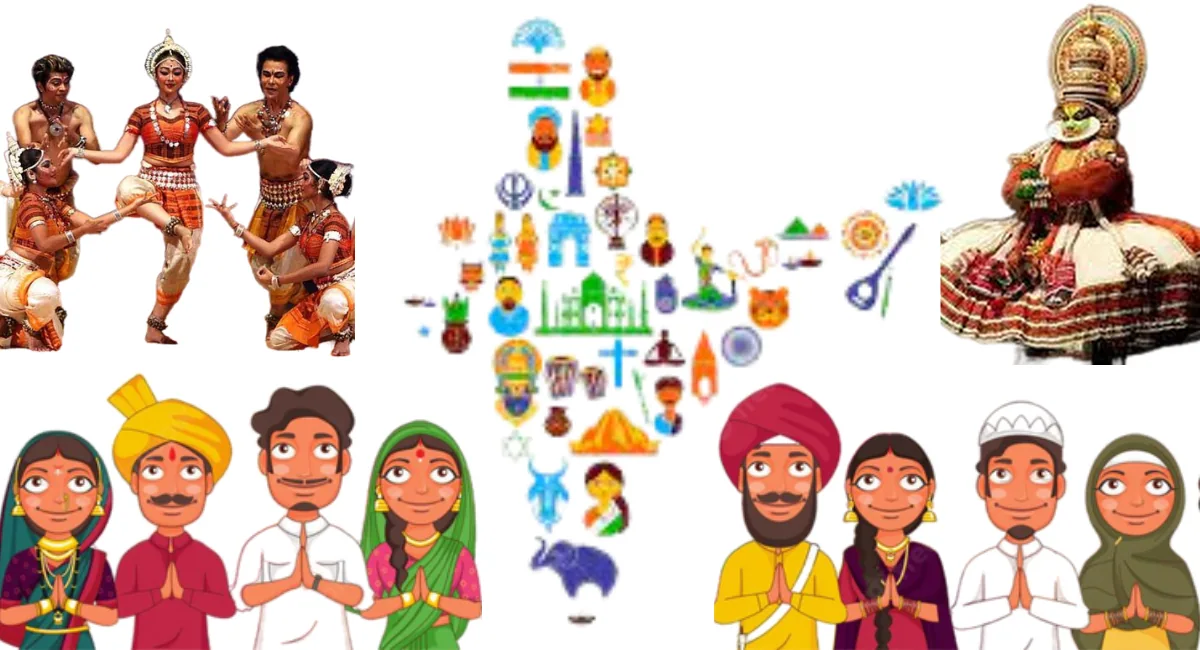In India new year is celebrated with more religious, traditional way and devoted to nature. Many communities live together and they follow their own customs and traditions especially their own calendars (lunar & solar). In India most of the new year starts with harvest festivals and people worship deities and thanks to nature.
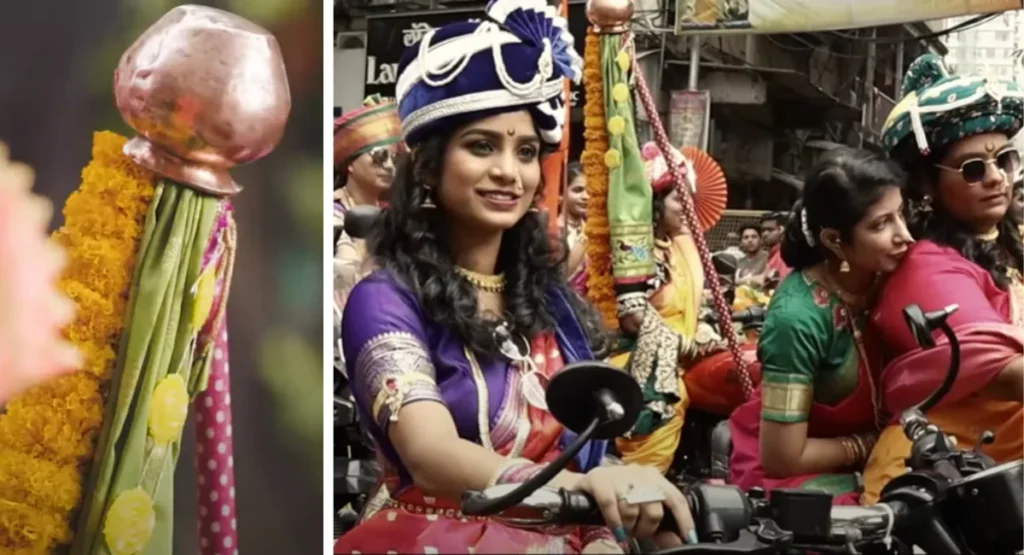
Gudi Padwa – Marathi new year
Gudi Padwa is celebrated on the 1st day of Chaitra month of Hindu calendar which usually falls in the month of March or 1st week of April. Gudi Padwa is mostly celebrated in Maharashtra (Marathi people) with great enthusiasm and konkani speaking people (usually in Goa, Karnataka, Kerala states). This year Gudi Padwa will be celebrated on 22 March 2023.
How is Gudi Padwa celebrated ?
On Gudi Padwa day, people wake up early, rub oil on their body and take bath and clean their house. Then they decorate house, made rangolis and finally Gudi is made (take a stick on top of that a utensil is placed made of copper or brass), then a cloth of silk (red or yellow color) is draped around that and decorate with flowers, garlands, leaves of sacred ashoka tree. Then they palace the ‘Gudi’ in the courtyard of their house and worship Lord Brahma. Huge processions are taken out, people dance, sing and wish each other and have traditional foods. Gudi Padwa Wishes in marathi :
नव्या संकल्पांनी करूया नववर्षाचा शुभारंभ गुढीपाडव्याच्या हार्दिक शुभेच्छा |

Sajibu Nongma Panba (Meetei Cheiraoba) – Manipuri new year
Meitei people follow Sanamahism religion and celebrate the new year in March or April with great pomp and joy, following the lunar calendar called ‘Meitei calendar (Kangleipak)’. This year Sajibu Nongma Panba (Cheiraoba) is on 22 March 2023.
How is Cheiraoba celebrated ?
On this day, Meitei people decorate their houses with flowers, wear traditional attires, worship their deities and have traditional foods (‘eromba, pakora, ooti’). After having food, people visit hillocks to worship deity and seek blessings for good health and prosperity. And married women visit their paternal homes with gifts for the family members. At night fun events begin with the community, where people perform many rituals, especially ‘Thabal Chongba’ folk dance and events are held across Manipur valley.

Chaitra Navratri – Hindu New year
Hindu people across India celebrate the new year on the first day of Chaitra month of Hindu lunar calendar which usually comes in March or April. This year Chaitra Navratri starts from 22 March 2023 and people celebrate it with fasting for 9 days of worshiping Goddess Durga. This Chaitra Navratri is celebrated by people with much fervor, people enjoy traditional food, houses, temples are cleaned and decorated, worship incarnations of Goddess Durga, Kali Puja and many ritual dances are also performed during this 9 days of Chaitra Navratri celebrations.
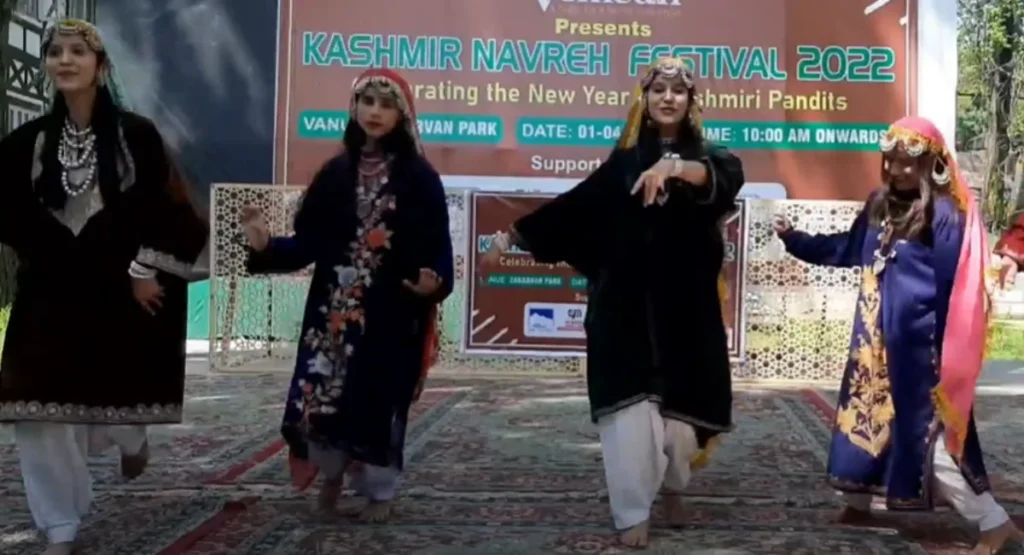
Navreh – Kashmiri New Year
Navreh festival is celebrated by Kashmiri Hindus (Pandits), which marks the beginning of New year for Kashmiris. Navreh word derived from Sanskrit, which means ‘Nava Varsha’ (or New year). During Navreh people worship Goddess Sharika (believed to be the incarnation of Goddess Durga). Many rituals performed a day before Navreh in evening ‘thaali’ prepared like a bronze plate decorated with flowers and filled with rice, sweets, vermillion, sacred grass, wye herb, walnuts, curd to offer Goddess Sharika (deities). On Navreh day, in early morning household members, especially women, take that ‘thaali’ offered to God and distribute those items to family members as ‘prasad’. Then after some walnuts or items drop into flowing water (river) as a sign of Thanksgiving. Also families visit temples of Goddess Sharika to seek blessings and offer turmeric rice, ghee. This year Navreh will be celebrated on 22 March 2023.
Ugadi (Yugadi) – Telugu (Kannada) new year
Telugu speaking people celebrate their new year as ‘Ugadi’ and Kannada people celebrate as ‘Yugadi’ on the first day of Chaitra month (starts in March or April month) of lunisolar Hindu calendar. Ugadi is celebrated in Andhra Pradesh, Karnataka, Telangana, TN, South Indian states. This year Ugadi 2023 named ‘Shobhakruthu’ will be celebrated on 22 March 2023.
How is Ugadi celebrated ?
People celebrate with much fervor, wake up early, take sacred baths, clean and decorate their houses, make rangoli on the floor called ‘kolam or Kolamulus’ made, decorate doors of houses with mango leaves called ‘toranalu’, idols of God Goddesses clean with oil, giving gifts to their loved ones, people also do charity on this day, many tradition perform like ‘Panchanga Sravanam’, A special mix of six taste ‘Ugadi Pachadi’ is made with (neem flowers, jaggery, tamarind, mango, salt, chili), also with many traditional foods ‘Bobbatlu, Atukula Payasam, Pulihora’, and street processions carried out with traditional dance, people go to temples and worship God.

Cheti Chand – Sindhi New year
Sindhi people celebrate Cheti Chand (Chetri Chandra) to commemorate the birthday of their patron Saint Jhulelal and as New Year’s Day. Sindhi people believe their Sant Jhulelal as Ishta deva ‘Sai Udero lal’ (incarnation of Varun Dev ‘God of water’) and also known by many different names like ‘Uday Chand, Amar lal, lal Sain’. Sindhis believe that Jhulelal has protected them from the oppressor through his miracles and provided justice to them. To honor the Jhulelal they worship him on Cheti Chand as New year. This Cheti Chand day is celebrated on the first day of Chet month as ‘Chet-I-Chand’ which usually comes in March or April in Hindu calendar. Sindhi celebrate their New year like other “Ugadi, Gudi Padwa”. Many rituals are performed like Chaliho Saheb (40 days of worship and fast) and Bahrana Sahib, processions are carried out and men perform folk dance called ‘Chej’. This year Cheti Chand will be celebrated on 22 March 2023. Sindhi people mainly live in Gujarat, Rajasthan, MP, Maharashtra states. Sindhi Wish :
“Cheti Chand ju, lakh lakh vadayun”.

Bohag (Rongali) Bihu – Assamese New Year
Bohag (or Rongali Bihu or Xaat or Haat) Bihu festival is celebrated as the start of a new year in the month of Baisakh or April for Assamese people. The Assam calendar starts with a month called ‘Bohag’ and the word ‘Rongali’ derived from Rong which means ‘Happiness and celebrations’. This year Rongali (Bihu) will be celebrated from 13 – 19 April 2023.
Bohag Bihu is celebrated for 7 days with many rituals and traditions performed during this week. The seven days of Bohag Bihu are dedicated to cattle, household deities, friends and relatives, farming equipment, and community. Many events are held, folk dances performed across villages, many dance groups visit different villages called ‘Husori’ and perform. People take sacred baths in rivers by applying turmeric and black gram paste and then have traditional foods ‘Til Laru, Pitha, Poka Mithoi’ and seek blessings from elders and enjoy.
Bodo community of Assam celebrate their new year as ‘Bwisagu festival’ in the same way with great enthusiasm.

Bizu (Biju) festival – Tripura New Year
Biju (or Buisu) festival is celebrated by the Chakma community as New year in Tripura and north east states. Bizu festival starts from the last day of Chaitra month of Hindu calendar which falls in April. This year’s Bizu festival will be celebrated from 13 – 15 April 2023.
This Bizu festival is celebrated for 3 days with great joy and enthusiasm. The first day called ‘Phool biju’ (day before new year) people clean their houses and decorate with flowers, whoever bathes early in the morning, especially children get ‘Bizu Gulo’ fruit to eat. Then lots of people visit Buddhist temples, from there people gather and rally towards nearby rivers to pay tribute or offer flowers to play a significant role in their life and parade to visit Buddhist temples. Then return to Buddha Vihara or temple, bring the water from the river and pour on Buddha statues. The second day ‘Mul Bizu’ (New Year), people bathe early, prepare traditional foods (Bora pedi, Sandi, Beni, Pajonton) and offer it to family, friends, relatives and neighbors. And many traditional and folk dance events are held. The third day ‘Gojje Pojje Din (Gotche Potche)’, the day for rest, many socio-religious activities are performed. People visit Buddha temples with families and offer the first fruit from farms there. Then attend ceremonies, listen to dhamma discourse by monks, then after food is distributed to the community and visitors. Also people give baths to elders, teachers and offer food and take blessings. On this day, many cultural and traditional activities, sports, music, dance are played. “Happy Phool Bizu”
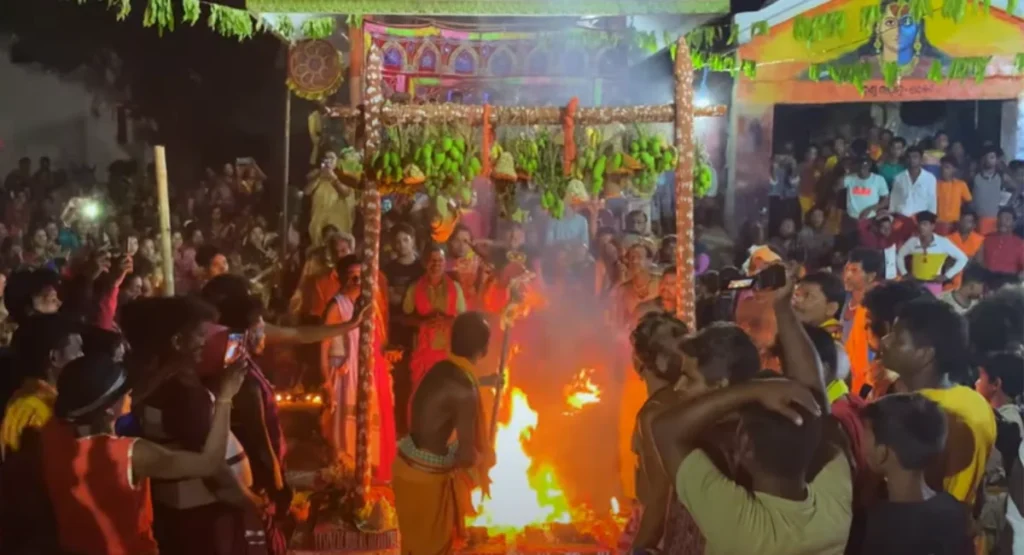
Pana Sankranti (Odia Naba Barsha) – Odia New year
Odisha’s new year celebrated by many different names ‘Maha Bishuba / Vishuba / Mesha / Pana Sankranti’, is also believed to be the birth of Lord Hanuman. Pana Sankranti is also famous because of ‘Pana’ traditional fruit drink of Odisha’s culture. People take bath early in morning and visit temples to worship (famous ones like ‘Taratarini temple in Ganjam’, Cuttack Chandi, Biraja temple, Samaleswari temple and Sarala Temple).
The main attraction during this Pana Sankranti the whole week is ‘Jhamu Yatra’ (priest fire walking) at Sarala Temple. And ‘Patua Yatra’ at Maa Patana Mangala Temple, many processions are held during this festival. In North Odisha, the festival is celebrated as ‘Chadak Parva’ and in South Odisha, Meru Yatra festival and many traditional dances like ‘danda nata’ are performed. This year Pana Sankranti will be celebrated on 14 April 2023.
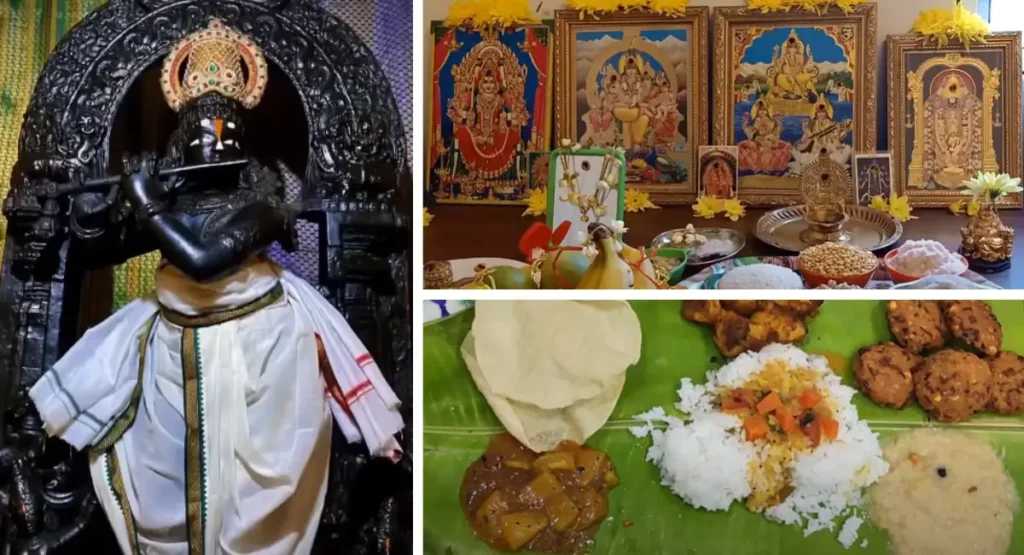
Puthandu (Puthuvarusham) – Tamil New year
Puthandu (Varusha Pirappu) is celebrated by Tamil people as New year on the first day of Chitterai month of solar Tamil calendar ‘Sauramana calendar’ which usually falls on 14 April 2023.
People wake up early, take sacred oil baths, then houses are cleaned and decorated with flowers, rangolis are made ‘Kolams’ in the courtyards of the house. A lamp (or Kuthuvilakku) is lit in the center of Kolam to ward off evil energy. An altar of the house (or prayer room) a ‘Thaali’ is prepared with flowers, raw banana, jackfruit, mangoes, fruits with rice, betel leaves, nuts, coins and money to worship. And The most important traditional delicacy is prepared ‘Mangai Pachadi’ which you should eat. Then comes the time of full meal of traditional foods like ‘Medu / Ulundu Vadai, Payasam, Poli, Pongal, Kosambari, Avial, Poosanikai, Vazhakkai curry, cabbage Poriyal, Vepampoo Rasam, Manga Urgai, Neer Mor, Panagam’ and more. If you wanna try traditional Indian Tamil delicacies / cuisines, then these festivals are the best time to have the food. Tamil people pay respect to elders and seek blessings and wish each other ‘Puthandu nalvalthukal’ (Happy New Year).
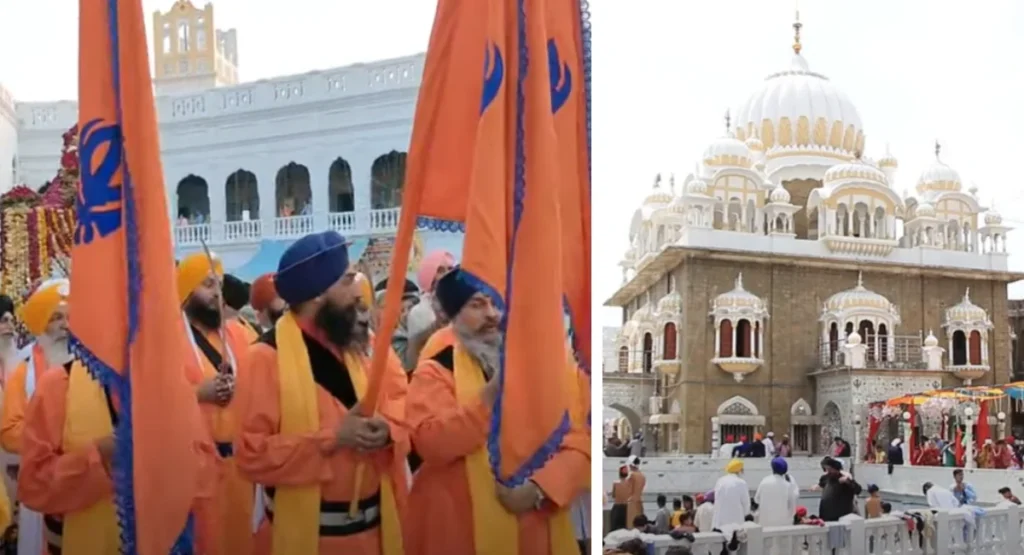
Vaisakhi (Baisakhi) – Sikh’s New Year
Sikhs in Punjab, India and around the world celebrate the New Year on Vaishakh Sankranti and follow ‘Nanakshahi calendar’. Vaisakhi is celebrated with great enthusiasm which usually falls on 14 April 2023. Sikhs also celebrate the formation of Khalsa Panth of warriors, founded in 1699 under the 10th Guru Gobind Singh Ji.
Sikh devotees visit Gurudwaras (worship place) and Kirtans, ceremonies are held and ‘Langar’ a holy feast is prepared for society or community as ‘Prasad’. Many processions are taken out with cultural and traditional dances and songs and also a fair is organized to showcase culture and have fun. The farming community worships agricultural lands on this day and harvest the first crop of the season. The Golden Temple in Amritsar Punjab India must be visited during this holy season.
Jur Sital (Jude Sheetal) – Maithili New Year
Jur Sital (also called ‘Aakhar Bochhor’ or ‘Mesh Sankranti’) is celebrated by the Maithili community in Bihar, Jharkhand, Nepal. This year Jur Sital is on 14 April 2023.
Jur Sital means ‘freezing cold’, a festival that starts a day before called ‘Satuani’ on which women prepare delicacies like ‘Kheer, daal bhari, saadi poori, drumstick curry, tilkora and kadhi badi bhaat. At night women clean the stove, pack it for the rest on Jur Sital day and water is kept in an earthen pot / container to clean. On Jur Sital, the new year day, the elder members of the family, especially women of the house, sprinkle the same water on people’ head, plants and street and clean the house. Then people have the stale food (basa khana) prepared the night before and worship and play Holi. Many events are organized on community bases, kite flying, a fair is also organized where people enjoy with family and friends.

Vishu – Malayali ‘Harvesting’ New Year
Malayali people celebrate new year on the first day of the month ‘Medam’. Vishu is an astronomical Malayali new year celebrated in Kerala and Tamil Nadu, India. This Vishu new year is on 15 April 2023.
People wake up early in morning and see ‘Vishukkani’ (custom of looking at auspicious items rice, fruits, gold and flowers) on Vishu day, clean the house, decorate with flowers, made kolam (rangolis) and worship Lord Vishnu (and his incarnation Lord Krishna). Elderly members of the family give coins to children as a custom called ‘Vishu Kaineettam’. In Malabar, north Kerala people burst crackers and the beginning of ‘Vishu Vilakku’ season starts. And the important ‘Vishu Sadya (Sadhya)’ lip-smacking delicacies prepared to have feast with family, friends and relatives.
Chingam 1 – Malayalam ‘Kerala’ New Year
Malayali people celebrate new year on the first day of ‘Chingam’ month called Chingam 1. This Chingam month starts in August in the Malayalam calendar called ‘Kollavarsham’.
Note Vishu is a harvest festival but also celebrated as new year but actually Chingam 1 is celebrated as New Year according to Kollavarsham calendar. This year Chingam 1 will be celebrated on 17 August 2023.
Chingam 1 (Simha Sankranti) people celebrate this day with much fervor and joy. People dress up in traditional dresses and visit temples and worship. Many events and rituals are performed on this day in temples. People have traditional delicacies prepared with family and friends.
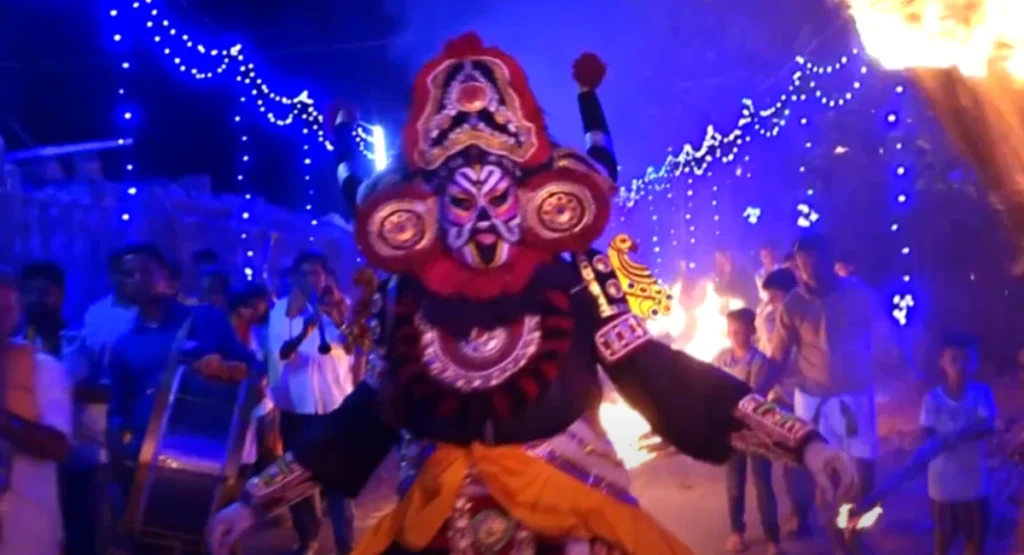
Bisu Parba – Tuluva New Year
The whole stretch of Udupi, Dakshina Kannada and Kasargod of Kerala is called Tulu Nadu. Bisu is celebrated on the first day of ‘Paggu’ month of Tuluva calendar called ‘Souramana Panchangam’. So Bisu Parba is also called ‘Souramana Ugadi’ and in other parts of Karnataka celebrated Kannada New year.
Tulu people celebrate new year, wake up early and take oil baths, wear new clothes and perform a ritual called ‘Bisu Kani’. The entire family must see the Bisu Kani early in the morning before the Sun rises. And youngsters put some rice on the feet of elders and seek blessings and get money or gifts in return also. Many events and rituals are performed in temples, traditional, cultural dances ‘Kola’ are held. Bisu Parba is complete with a feast of traditional delicacies are prepared like Kosambari, chutneys, Gojju, Kovakkai, Thouthe Kodel, Kadle Kaalu rasam, Udupi rasam, Payasam, Kashi Halwa.

Pohela Boishakh – Bengali New Year
‘Nobo borsho’ Bengali people celebrate the new year ‘Pôhela Boishakh’ on the first day of ‘Boishakh’ month of lunisolar ‘Bangabda Bangla calendar’. This year Pohela Boishakh will be celebrated on 15 April 2023.
People wake up early, take baths, wear new clothes, wish for each other, clean and decorate the houses, visit temples and worship. Many fairs, events and parades are held during this celebration day. People partake in all events and enjoy it with family and friends with great enthusiasm. One thing you should not miss is the Bengali traditional delicacies which are prepared on this eventful week of celebrations.
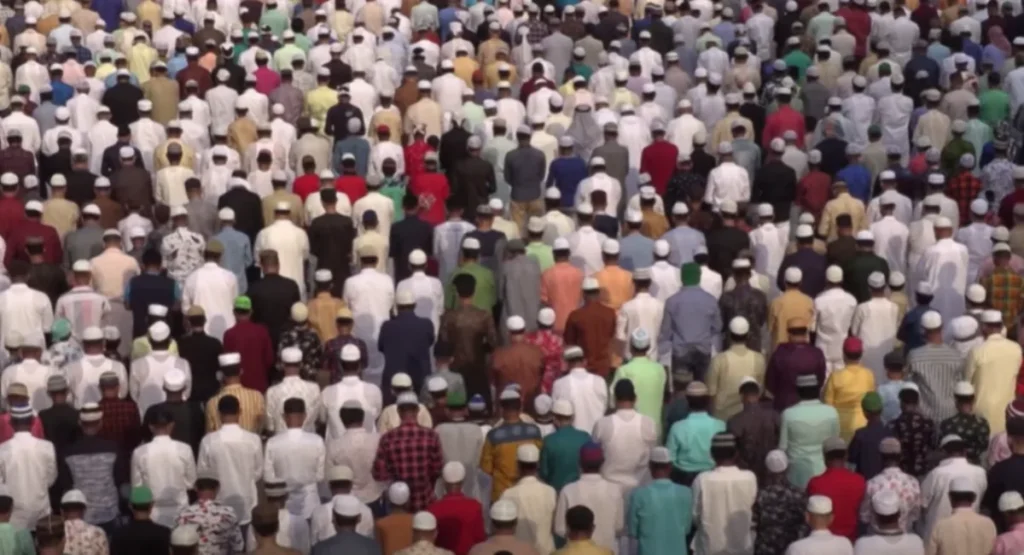
Islamic New Year – Hijri New Year
Muslim people celebrate their new year as Islamic new year following the lunar ‘Hijri calendar’. This Islamic New Year usually falls in the month of July or August, this year it’s on 18 – 19 July 2023.
India is the 3rd largest country of Muslims population in the world. And Muslims celebrate the new year in a month called ‘Muharram’. The majority of people celebrate the holiday by attending prayer sessions in mosques, spending time with family and friends, having delicacies and great time together.

Navroz (Nowruz) – Parsi New Year
The Parsi community celebrates the new year on the first day of month ‘Frawardin’ following Zoroastrian calendar. In Persian, Navroz means Nav (new) and Roz (day) i.e. ‘New day’.
The Parsi community mostly lives in Gujarat and Maharashtra, which celebrates Navroz with great joy and fervor. Parsis celebrate the occasion by decorating their homes, wear traditional dresses, give gifts and have traditional cuisines and love to spend time together with family and friends. The Parsi new year is also known as ‘Jamshed-i-Nowruz’, which coincides with Spring Equinox (day and night of equal time).

Losoong (Namsoong) – Sikkimese New Year
Sonam Losoong / Namsoong is a New Year celebrated by the Bhutia tribe and Lepchas in Sikkim. This festival begins from the 1st day of the ‘Kurneet Lovo’ according to the calendar ‘Dungkit Karchu’ (Lepcha calendar) falls in December or January. This Losoong festival is celebrated for five – seven days.
On this festival many ceremonies are held at the monastery and several folk ‘Chham / Chaam’ (Mask dances) are performed. Many events and competitions (like archery and native sports) are organized during this festival week. Many local cuisines are prepared and stalls are prepared for visitors to enjoy traditional food. Many monasteries like Tsu-la-khang, Phodong, Rumtek monastery are famous which you should visit during this festival week.
Sonam Lhosar (Lochar)
Is celebrated by the Tamang community as a New Year in Sikkim, Nepal and Darjeeling. Tamang people celebrate with great joy and zeal.
Gyalpo Lhosar (Losar)
Gyalpo Losar is celebrated by Sherpa people as a New Year in Sikkim, Nepal and Darjeeling. This festival is celebrated for 15 days with great enthusiasm.
Tamu Lhosar (Losar)
Tamu Losar is celebrated as the New Year by the Gurung community in Sikkim, Nepal. Gurung people celebrate Tamu Lhochhar with many ceremonies, folk dances and wear traditional attire.

Sangken (Arunachal Pradesh) – Theravada New Year
Theravada New Year is celebrated as Sangken in Arunachal Pradesh, India. Also Theravada new year is celebrated for 3 days with different names in Asia which usually comes in mid April month on 13 – 15 April 2023.
Sangken Water Festival is celebrated by many tribes of Arunachal Pradesh as a New Year, with great enthusiasm and devotion. People cleaned their houses, monastery, shrine and carried out idols of Buddha to wash with holy water and premises also. Then people also play with water as like Holi in Hindu religion. Songs, traditional dance and events are held at monasteries and community bases and have feast together with family and friends. This ‘Sangken festival’ is celebrated as ‘Songkran’ in Thailand.
Buddhism is divided into 3 major sects, which are Theravada Buddhism, Mahayana Buddhism and Vajrayana Buddhism.
Mahayana (Buddhist) New Year
Budhhist celebrate Mahayana new year with great joy and fervor. Mahayana New Year falls on the first full moon in January. Buddhist people visit Buddha Temples and prayer ceremonies are organized. Every Buddhist lights a candle (believed to bring happiness and good luck), lights up lamps, decorate the houses, wear new clothes, give gifts, songs are sung, Buddha statues are carried out and washed. Buddhists also meditate and make resolutions for the upcoming year and correct all mistakes they had made in previous year. This year Mahayana New Year is on 7 January 2023 (date may vary).
Bestu Varas – Gujarati New Year
Gujaratis celebrate new year on ‘Pratipada Tithi’ (the next day of Diwali) in kartik month of Hindu calendar. During this Diwali festival week people celebrate all festivals with great zeal and fervor. Gujaratis worship Goddess Lakshmi during Chopda Puja (believed to make the new year prosperous and profitable). Gujaratis wear new clothes, decorate houses, wish and give gifts to each other. Many rituals and traditions are performed, old account books are closed and new ones are taken out on this day. Devotees write Shubh and Labh on new account books and if starting new work during this auspicious time.
Marwaris – Thapna
In Rajasthan and Gujarat ‘Marwari’ people celebrate their new year on Diwali called ‘Thapna’ with great joy and fervor.
Jain – New Year
Jain people also celebrate new year in the next day of Diwali, following ‘Vira Nirvana Samvat’ calendar. Lord Mahavira’s final liberation is celebrated as the New Year. Jain community celebrate new year by offering ‘Nirvan laddu’ in the temple in morning and chanting Gautam Ras. Also many rituals and ancestral traditions are performed to pay respect and as remembrance.
If anything missing or anything left, Please comment below we will update on our bests.
FAQs
What is the name of Ugadi 2023 called ?
In 2023 Ugadi name is ‘Shobhakruthu’ and will be celebrated on 22 March 2023 in Andhra Pradesh, Karnataka, Telangana, South Indian states by Telugu speaking people.
What is the name of a rangoli made on Ugadi day ?
On Ugadi day, Telugu people decorate houses and rangoli made on the floor in the courtyard called ‘Kolam or kolamulus’.
How many different calendars are used in India ?
Many different calendars are used in India, like 1.Solar calendar name ‘Sauramana’ and 2.Lunar calendar name ‘Chandramana’, then 3.Luni-Solar calendar and 4.Jovian calendar (based on Jupiter), in which years are counted in cycles of 60 years.
What is Pateti day and Navroz ?
Pateti means repentance, observed on a day before Navroz. People repent for their sins on Pateti day. And Navroz is celebrated by Parsis as a New Year.
What are the sects of Buddhism ?
Buddhism is divided into 3 major sects, which are Theravada Buddhism, Mahayana Buddhism and Vajrayana Buddhism. Buddha teachings spread over Asia and developed with different traditions.

